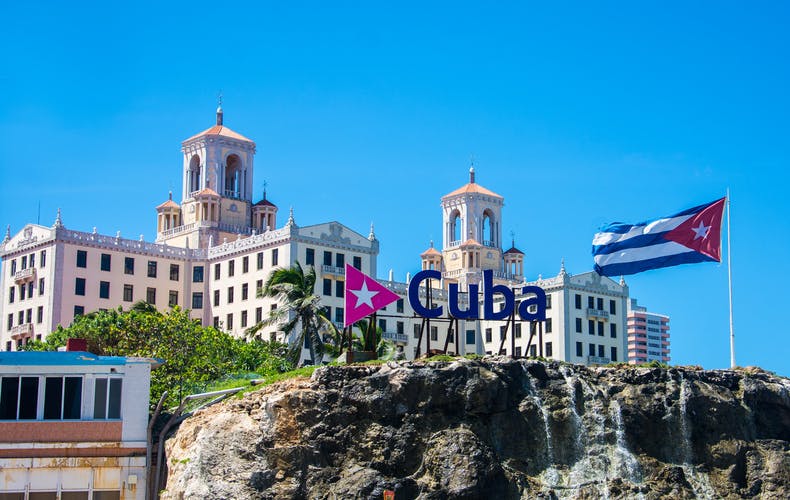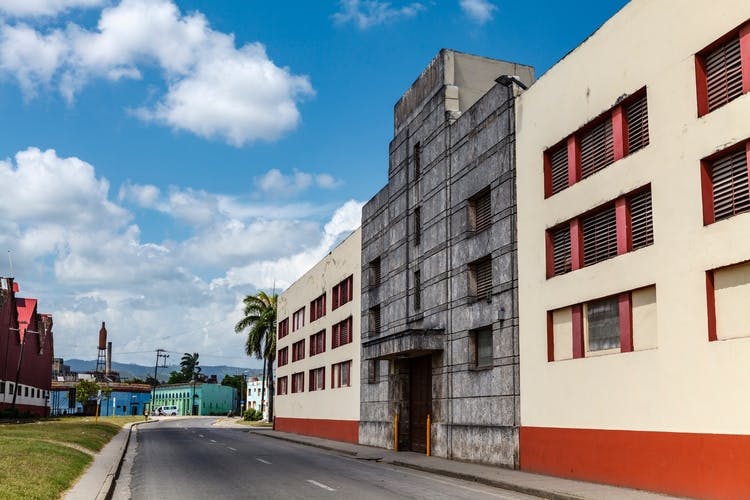
It was in 1511, with the arrival of the Spanish colonizer Diego Velázquez de Cuéllar, that the island of Cuba recorded its first production of sugarcane juice.
At that time, sugarcane was crushed in small quantities using rudimentary mills called trapiches to extract the juice known as guarapo.
Les prémices du rhum cubain
At the beginning of the 17th century, several rudimentary trapiches were transformed into more sophisticated facilities capable of refining sugar. This led to the creation of the first refineries in Cuba, known locally as centrales.
By 1640, the island already had 60 centrales. It was in the mid-18th century that Cuba’s sugar industry experienced a major turning point.
From March to August 1762, during the Seven Years’ War, fierce fighting took place between the Spanish and British armies. British forces stormed and occupied the city of Havana. The city was returned to Spain following the Treaty of Paris in 1763.
This brief British occupation had a significant impact on Cuba’s sugar industry. The British accelerated the opening of trade with the Thirteen Colonies in North America.
After regaining control of the island, Spain enacted laws to encourage the production of sugar, molasses, and Cuban rum, leading to spectacular growth in production.

In 1777, over 13,000 hectoliters of rum were exported to the United States, reaching 75,000 hectoliters by the early 19th century.
During this century, everything accelerated. The Industrial Revolution introduced steam engines that transformed the centrales, leading to mills with significantly higher crushing capacity.
It was also in the 19th century that the giants of Cuban rum, known today, emerged—such as Bacardi rum in 1862 and Matusalem rum in 1872.
La prohibition américaine propulse le rhum cubain
In 1920, the adoption of the National Prohibition Act, also known as the Volstead Act, by President Woodrow Wilson marked the peak of decades of temperance movements.
During this period, Cuba became the premier destination for all kinds of festivities, notably wet weekends.
A large number of rum-based cocktails emerged, such as the Daiquiri and the Cuba Libre—quintessential Cuban cocktails popularized largely by Constantino Ribalaigua and Ernest Hemingway.

Certainly, rum production for export to the United States experienced a significant decline, but distilleries continued producing alcohol for other purposes (medicinal, cosmetic, industrial, etc.).
By 1936, the few hundred distilleries still operating in Cuba were producing over 200,000 hectoliters of rum and exporting more than 30,000 hectoliters, with the most famous producers being Bacardi and Matusalem.
Le rhum cubain à son apogée
From 1940, industrialization led to a significant increase in sugar production in Cuba, rising from 1.3 million tons in 1905 to nearly 6 million tons in the 1950s. However, this growth was accompanied by a drastic reduction in the number of sugar mills, which fell from 181 to 101 during the same period.
On January 1, 1959, Fidel Castro came to power and made sugarcane and rum production a national priority. On October 13, 1960, he nationalized the 105 sugar mills and 19 distilleries across the island.

At that time, Cuba was the world’s largest producer of sugarcane, with over 1.2 million hectares under cultivation. The entire economy of the country depended on this massive production. Today, Cuba produces 12 million tons of sugar, spread over just more than 400,000 hectares.
Two emblematic Cuban rum distilleries
The rum market in Cuba holds a significant share globally, with an annual production exceeding 55 million liters of rum.
A massive volume of 35 million liters falls into the entry-level category, consumed throughout the island without specific branding or official recognition.
Havana Club Distillery
The Havana Club brand was established in 1934, at the end of American Prohibition, at the Vizcaya distillery, owned by José Arechabala y Aldama’s company.
José Arechabala y Aldama had built the distillery in 1878 in Matanzas. Until 1898, all production was sold locally and exported to Spain. It was only after World War I that the distillery began exporting rum to South American countries and parts of Europe.
During these years, the distillery benefited from 40 hectares of sugarcane fields, a sugar factory, an alcohol distillery, aging warehouses, and a pure alcohol distillery. By the 1950s, average stocks reached about 15,000 barrels, or approximately 2 million liters of pure alcohol.
The nationalization of all distilleries in Cuba by Castro in 1960 forced the closure of the original distillery. It was relocated to Santa Cruz del Norte in 1970.
In 1993, the Cuban government partnered with the French group Pernod Ricard to completely renovate the distillery. By 2003, Havana Club International was created, along with a new ultramodern distillery in San José de las Lajas, adding to those in Santa Cruz del Norte and Santiago de Cuba.
Today, Havana Club International stores more than 20 million liters of pure alcohol in 168,000 barrels at San José de las Lajas. Produced from Cuban molasses, Havana Club rum, distributed by Pernod Ricard, has become the fourth best-selling rum brand worldwide.
Bacardi Distillery
The Bacardi story begins in 1862 when Don Facundo Bacardi Massó founded the brand in Santiago de Cuba. He revolutionized rum production by creating a smooth and light spirit.
Don Facundo’s wife, Doña Amalia, proposed adopting the bat as the brand’s symbol, associated with health, family unity, and good fortune. This symbol became iconic, and locals began asking for "el ron del murciélago" — the bat’s rum.
International expansion followed, but the Prohibition in the United States in 1920 forced the company to close its New York plant. Bacardi responded by promoting Cuba as a tropical getaway, attracting Americans eager to enjoy Bacardi rum.
The company continued to grow, inaugurating the Edificio Bacardi in Havana, an Art Deco skyscraper that became a cultural hub. Today, Bacardi produces rum in Mexico and Puerto Rico, where its distilleries remain among the largest in the company.

The company grew increasingly powerful and sought to strengthen the protection of its brand, notably in 1936 when a New York court ruled that any cocktail named Bacardi Cocktail must be made exclusively with Bacardi rum.
However, Bacardi’s prosperity was severely impacted by Castro’s rise to power in Cuba.
In 1960, Bacardi’s assets in Cuba were confiscated by the revolutionary government. The Bacardi family continued its operations abroad after relocating its trademarks and yeast strains outside Cuba.
The move of Bacardi International Limited to Bermuda in 1965 created a bridge between Europe and the United States. Bacardi then became the world’s best-selling premium spirits brand.
The 1990s saw the creation of Bacardi Limited, consolidating several strategic business units, and the opening of the Casa Bacardi in Puerto Rico, a state-of-the-art visitor center. Bacardi innovated with the launch of Bacardi Limón, which became the most successful spirits launch of all time.
Today, Bacardi is the second best-selling rum brand worldwide.
TO DISCOVER RUM FURTHER
La Maison du Whisky has three boutiques in Paris:
In each of these boutiques, you'll find a wide selection of whiskies, rums, sakes, and other fine spirits.
Follow our tasting calendar for upcoming events, or visit the Golden Promise Whisky Bar, which offers an extensive selection of whiskies and other spirits by the glass.
You can also discover other articles about rum.